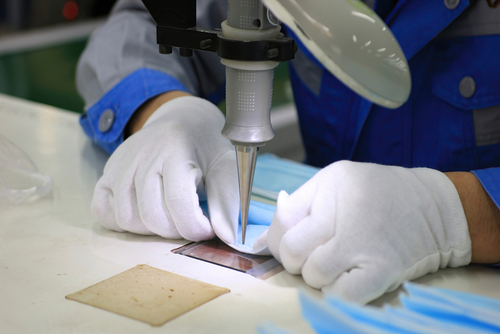
The vision of Pennsylvania becoming a center of the U.S. petrochemical industry could get a fresh boost from, of all things, the coronavirus.
The high-profile supply squeeze on personal protective equipment (PPE) nationwide has the federal government seriously looking at shortening the supply chain for items such as respirator masks, gloves, face shields and other high-demand products made largely of plastic. And business leaders say Pennsylvania would be the perfect location for new PPE factories that would be a day’s drive from many major U.S. cities rather than a slow boat voyage from Asia.
“The front line of our defense is chemicals,” Tom Gellrich, founder and CEO of TopLine Analytics, said at the first virtual edition of the “Think About Energy” series.
George Stark, director of External Affairs for Cabot Oil & Gas and moderator of the panel, agreed and added, “We need to be thinking about on-shoring these industries again.”
Healthcare safety equipment is just one of the product fields that would conceivably flourish in Pennsylvania thanks to an accompanying increase in the production of plastics and other chemicals using gas from the Appalachian Basin, particularly the Marcellus Formation. The proximity of Pennsylvania to industrial customers in the Northeast and Midwest should make the region a tempting location for new plants that manufactures not only PPE but scores of other products unrelated to coronavirus that depend on access to low-cost raw materials.
The rise of fracking, which releases crude and natural gas from rock formations that had previously been cost-prohibitive, has turned Shale Crescent, a three-state region that includes Pennsylvania, Ohio, and West Virginia, into a regional energy player. The handy resources mean, according to the panelists, that Pennsylvania should be a natural home for new chemical plants and for a wide range of end-user manufacturers that would utilize the plastics and other products they produce.
Gellrich explained that the shift of petrochemical-based manufacturing from the United States to Asia and the Middle East during the oil crunch of the 1970s was based on a potent combination of lower-priced energy and labor. The advent of shale production combined with a new generation of cost-cutting automation in the 21st Century could be another game-changer. “We have a once in a lifetime opportunity,” said Greg Kozera, director of Marketing & Sales for Shale Crescent USA, who floated the idea of tax incentives to attract new PPE manufacturers to the state. “We should be manufacturing gloves and masks … and bringing the manufacturing of pharmaceuticals back here,” he said.
The low cost of feedstocks and Pennsylvania’s proximity to markets was enough to prompt Shell Chemical Appalachia LLC to launch construction in 2016 of a new plant 30 miles outside Pittsburgh in Beaver County. The Pennsylvania Petrochemicals Complex is nearing completion and will eventually produce 1.6 million tons of polyethylene annually using feedstocks produced in the area. The finished product will be available within a day’s drive of the vast majority of the manufacturing customer base.
“The reason it is economically feasible,” said Kozera, “is that it isn’t dependent on getting (feedstock) from the Middle East; it is literally right under the plant.”
Other projects are already being explored, according to Carl Marrara, vice president of Government Affairs at the Pennsylvania Manufacturers’ Association, including a nitrogenous fertilizer plant in Clinton County and an organic-chemical plant in Luzerne County. The jobs at the manufacturing facilities, once construction is complete, would total 300 direct jobs, but those 300 direct jobs would spur 717 indirect and induced jobs. “You would also see a lot of other manufacturing clustering around them,” said Marrara. “And these jobs have a lot of staying power.”
However, expanding Pennsylvania’s share of the U.S. petrochemical market might not be low-hanging fruit. Shale gas is also readily available in the Gulf Coast where chemical plant expansions are increasing the area’s capacity at a time when projected industrial demand was considered to be on the soft side even before coronavirus popped up.
The current state of the chemical industry and the overall manufacturing sector, however, offers some promising indicators. Gellrich said investment sentiment remains bullish as the use of plastics and chemicals in manufacturing increases. Of the approximately $180 billion in announced investments in U.S. manufacturing, more than half are in the chemical sector. “And more than 70 percent of that is investments from foreign countries,” said Gellrich. “They know that they have to be in the United States market.”
The expansion of plastics and petrochemicals in Pennsylvania will require the cooperation of state government at a time when plastics and fracking have fallen into disfavor with environmentalists and with many green-leaning politicians around the country. Once the coronavirus winds down and the economy begins to recover, the crucial role of plastics in fighting the pandemic could inspire a more active role by Harrisburg in paving the regulatory road to make certain that Pennsylvania gets its share of the market.
Stark said: “We know that West Virginia is doing it and Ohio is doing it. We need to work as a region and be prepared to promote the things we have.”